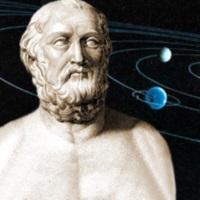The Cleverness of Astronomers

Tuesday 21st April, 2015
 |
In his talk to the Society, entitled "The Cleverness of Astronomers", Andrew Baxter gave examples of how various astronomers had laid the foundation stones of what is now considered the science of astronomy. In a letter to Robert Hooke in February 1676, Sir Isaac Newton wrote "If I have seen further it is by standing on ye sholders of Giants". Newton wanted to stress to his correspondent that the developments he had made were only possible due to the dedication of previous scientists.
He began by saying that, in his view, the development of the field of astronomy can be broken down into various eras dependent on the technology available at the time. Firstly, the invention of the telescope, which improved upon observations by the naked eye. It is not known who actually invented the telescope but the first person to apply for a patent was one Hans Lippershey in 1608, who was a Dutch eyeglass maker by trade. Scientists such as Galileo Galilei and Thomas Harriot were quick to take advantage of the new instrument and made detailed drawings of the Moon only a year later.
Then came the invention of the camera and the earliest known surviving photograph was taken by the scientist Joseph Niépce in 1826 or 1827. However, it was another thirteen years before equipment and techniques had advanced enough to take a successful photograph of an astronomical target. This was a 20-minute long daguerreotype image of the Moon and was captured by Professor John Draper using a 5-inch reflecting telescope.
The next step forward was the ability to take telescopes and cameras beyond the Earth. The first images came from sub-orbital flights and in 1946 an American V2 rocket took a number of images every 1.5 seconds and climbed to a height of 65 miles. From that point onwards technology has advanced to allow astronauts on the Apollo 17 spacecraft in 1972 to take a photograph known as "The Blue Marble", which encompasses the whole Earth in the blackness of space. Then in modern times we have the Hubble Space Telescope staring far in the distant reaches of the Universe.
Despite all the advantages given by modern technology, Andrew said he had the greatest admiration for those scientists and astronomers who lived and worked before even the invention of the telescope. There was one particular ancient Greek astronomer and mathematician called Aristarchus of Samos, who he named as the cleverest of the astronomers.
Aristarchus, who lived in the 3rd Century BC, came up with the first heliocentric model of our Solar System (where the Earth orbits the Sun). He proposed that the Earth rotates on its axis and that other stars were just other objects like our own Sun but very distant. He even attempted to work out the relative diameters and distances of the Moon and Sun. He calculated that the Sun was about 20 times bigger than the Moon and 20 times further from the Earth than the Moon. Unfortunately, he was a factor of 20 out as the Sun is 400 times bigger than the Moon and 400 times the Earth-Moon distance.
This article was written for the club news column of the Stratford Herald. The actual lecture explained the subject at a deeper level.
